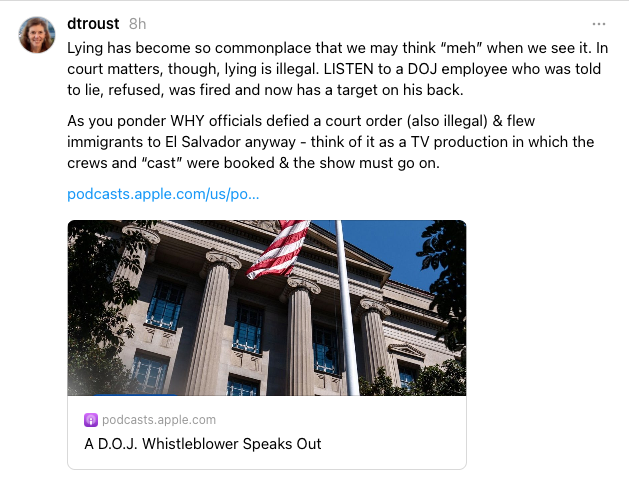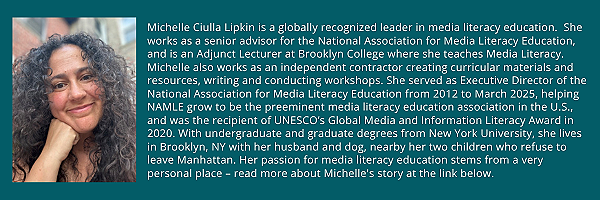Disinformation, propaganda, media literacy: What we're calling things at the moment
Because words matter.

When I began helping people navigate digital spaces, I didn't refer to what I was doing as "media literacy education." Someone who spends hours on YouTube every day, I thought, probably considers themselves pretty media literate!
I now see media literacy education for what it is: Full of critical scholarship and seasoned practice, and the discipline to which we belong.
But what is media literacy, really? The National Association of Media Literacy Educators (NAMLE) defines it this way:
Media literacy is the ability to access, analyze, evaluate, create,
and act using all forms of communication.
It's an umbrella term that encompasses more specific literacies – digital literacy, information literacy, news literacy and so on. NAMLE also offers this broader definition that describes the Truth in Common approach pretty well:
Media Literacy is interdisciplinary by nature. It represents a necessary, inevitable, and realistic response to the complex, ever-changing electronic environment and communication cornucopia surrounding us.
It's difficult to be a productive member of society if you're uncomfortable with or avoid participating in the digital universe or are prone to being influenced by information that's inaccurate, inauthentic or a downright scam. Our aim is to help people feel more confident, less confused and a bit skeptical when they engage online and in person. If the response to our talk at the recent NAMLE Annual Conference was any indication, the media literacy universe is ready for and open to new-ish players like us who focus primarily on adults (and are in the minority in doing so).
There's also been an evolution in the terms we use in our workshops. Previously, we defined mis-, dis- and malinformation then offered a bunch of examples that revealed the actors, tactics they use, kinds of content and their distribution. Now, as we see leaders engage more with their constituents via snippets on social media, talking-head intermediaries and performative actions that dominate the news cycle – like issuing executive orders that are never implemented or holding a falsehood-filled news conference as apparent deflection from a growing scandal – we explain propaganda, even rumors in an effort to round out the many forms powerful and misleading information can take. See Renee DiResta's book Invisible Rulers for more thinking along these lines.
Still, it's the examples that bring these terms to life. Here are a few recent posts:


I can't recommend the above episode of The Daily enough – it'll make your day to hear someone who was courageous enough to say no.
Baltimore County Public Library series is starting up again
Arbutus branch in August (starting Monday the fourth!), Reisterstown in September and North Point in October! Visit this link for more information and to register.
Expert help
Fortunately, we now have an expert to help us sort through terms and further establish our place in the media literacy education universe. Michelle Ciulla Lipkin, who recently stepped down as executive director of NAMLE, is the inaugural member of our new Advisory Board! More about Michelle:

Michelle brings unmatched experience and a personal story that shows tragedy can lead to inspiration. We're very lucky to have her support and counsel, and will let you know about other Advisory Board members as they're brought on.
Speaking of Board recruitment . . .
We need to add helping hands to our hardworking and passionate founding Board of Directors. We especially need folks with expertise in these areas:
- Nonprofit administration
- Development
- Operations
If you're interested yourself, or have someone to recommend, ping us at info@truthincommon.org and we can set up a time to talk. Thanks for your help!
What we're posting/reading/listening to/watching
- People often ask about how to work with folks who've gone down various rabbit holes. How to talk to someone about conspiracy theories in five simple steps (The Conversation, January 20, 2023) was shared by someone at the NAMLE conference; check it out.
- On July 22, we published an op ed in The Fulcrum about Congress managing to weaken both our public media system and their own responsibility for stewarding our tax dollars: There's nothing "meh" about dismantling public media. Kudos to editor Kristin for publishing same day and in between the devastating Senate and House votes.
- File under inevitable: NewsGuard revealed a fake of the birthday letter President Trump reportedly gave Jeffrey Epstein (Beware Fake Version of Trump’s Alleged Bawdy Drawing for Epstein, July 22, 2025) that was shared by anti-Trump accounts and received tens of thousands of views. This further complicates a story that Trump said was itself faked by the Wall Street Journal – which, you will note, did not publish the letter itself.
- Public media needs our support. Here's a repeat of the points I posted for talking about its importance – please use them!
📌 Public media systems are standard in economies around the globe.
📌 We spend far less on our system than others – a 2022 study of 33 countries showed that Germany spent $142.42 per capita on public media, Japan $53.15 & the U.S. spent just $3.16. Even Botswana spent more than we did at $18.38. Today federal funding for public media amounts to just $1.60 per capita.
📌 The communities that will suffer most from these cuts are those with fewer resources to begin with – rural communities, Tribal nations and smaller towns whose stations rely more heavily on federal funding and have few information sources overall.
📌 Eliminating the community warning aspect of public media is unspeakable given the recent devastation in Texas.
📌 Claims that public media networks are biased don't hold water – we're talking abut nonprofits that are standards-based and apolitical, as required by the IRS.
📌 Trans people exist and media outlets will cover them as they cover all people. What would be biased is if they DIDN'T cover them for whatever reason, while covering everyone else. (NB: People just really don't understand bias)
📌 Ironically, the administration is now trying to weaken IRS regulations and allow nonprofits to participate in politics. If they were truly worried about nonprofit outlets being partisan, why would they do that?
📌 When you complain about bias while spewing partisan rhetoric yourself and making decisions accordingly, you eliminate your credibility.
📌 Perhaps the goal is to get stations to switch formats – like JD Vance's home NPR affiliate did when the state cut the budget and the station was bought by a Catholic media network. It now airs religious programming.
📌 The recent rescission vote is the latest in a years-long campaign to take down legacy media overall, with the apparent goal of keeping people uninformed – perhaps so other content can influence them and the news won't, or governments can do what they please, without accountability.
Follow us on Instagram @truth_incommon
LinkedIn | Threads: @dtroust | Twitter
Our mailing address is P.O. Box 21456, Washington, DC 20009
Copyright (c) 2024 Truth in Common. All rights reserved.

